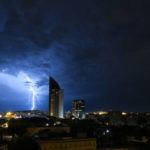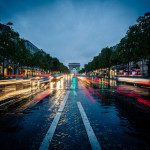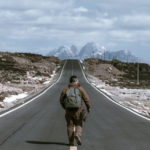What do videos of flight patterns, a burning forest fire, the rebuilding after hurricane Katrina, a cross-country road trip, and the unfolding of a crocus have in common? Aside from being mesmerizingly surreal, they’ve all been subjects of timelapse photography. Timelapse photography has become super-popular these days and ever more creative as it becomes more and more accessible. If you’ve never tried it before, it’s easy to imagine that making a timelapse video involves lots of expensive gear, not to mention uber-complex post-processing, but these days just about anyone can master the basics. Photographer Gavin Hoey takes you through all the essential steps in the video below:
Timelapse photography—the art of speeding up time so that slow changes in a scene appear quick and flowing—is simply a number of ordinary stills taken in sequence and put together to play quickly in a video. It’s a pretty straight-forward process: all you need is a DSLR, Photoshop, a tripod, a camera, and an intervalometer (a device that counts intervals of time). Your intervalometer can be built into the camera, a separate device, a shutter release cable that connects your camera with your smart phone, or even a programmed graphing calculator.
What to Shoot
Deciding what to shoot is perhaps the most creative part of timelapse photography. We’ve all seen the clouds streaking through the sky or traffic moving through the streets, yet there are so many subjects out there waiting to be discovered. If you’re just starting out, however, there are a few things you’ll have to keep in mind:
- The first and most obvious necessity to choosing a scene for timelapse is that there has to be something moving in it over the time period you’ll be shooting. It can be moving quickly, it can be moving slowly, but it must be moving. Also, the composition needs to stay absolutely the same.
- You’ll also want to choose a place where you and your equipment will remain undisturbed. You may be shooting for just 20 minutes, you may be shooting for 3 days, but either way, your camera needs to be totally stationary and unimpeded.
- If you’re just starting out you’ll want to choose a scene that won’t be going through any lighting changes while you’re shooting. Lighting changes, though quite amazing to capture in timelapse, require far more active involvement. Start out simple.
Post-Processing Tips and Tricks for Timelapse
- Make sure all your photos have the same white balance, contrast, color correction, etc. They’ll need to look as if they’re exactly the same with only the movement being different.
- Take a picture of your hand when you start your actual timelapse piece and when you end it. You’ll be taking hundreds of photos and putting your hand in the frame at the beginning and end will allow you to easily find the photos in the sequence you need.
- Once you’ve created your video in Photoshop, use Free Transform for any subsequent size adjustments. (It works for both photos and videos.)

Placing your hand in the frame at the beginning and end of the time-lapse is a great way to mark when your sequence starts and ends.
Once you’ve got the basics down, you’ll be able to expand out from simple exposures to complex, perhaps even multi-day shoots, involving thousands of photos. The sky—or your creativity—is the limit.
It can be found here: The Timelapse Photography Guide
Like This Article?
Don't Miss The Next One!
Join over 100,000 photographers of all experience levels who receive our free photography tips and articles to stay current:







Leave a Reply